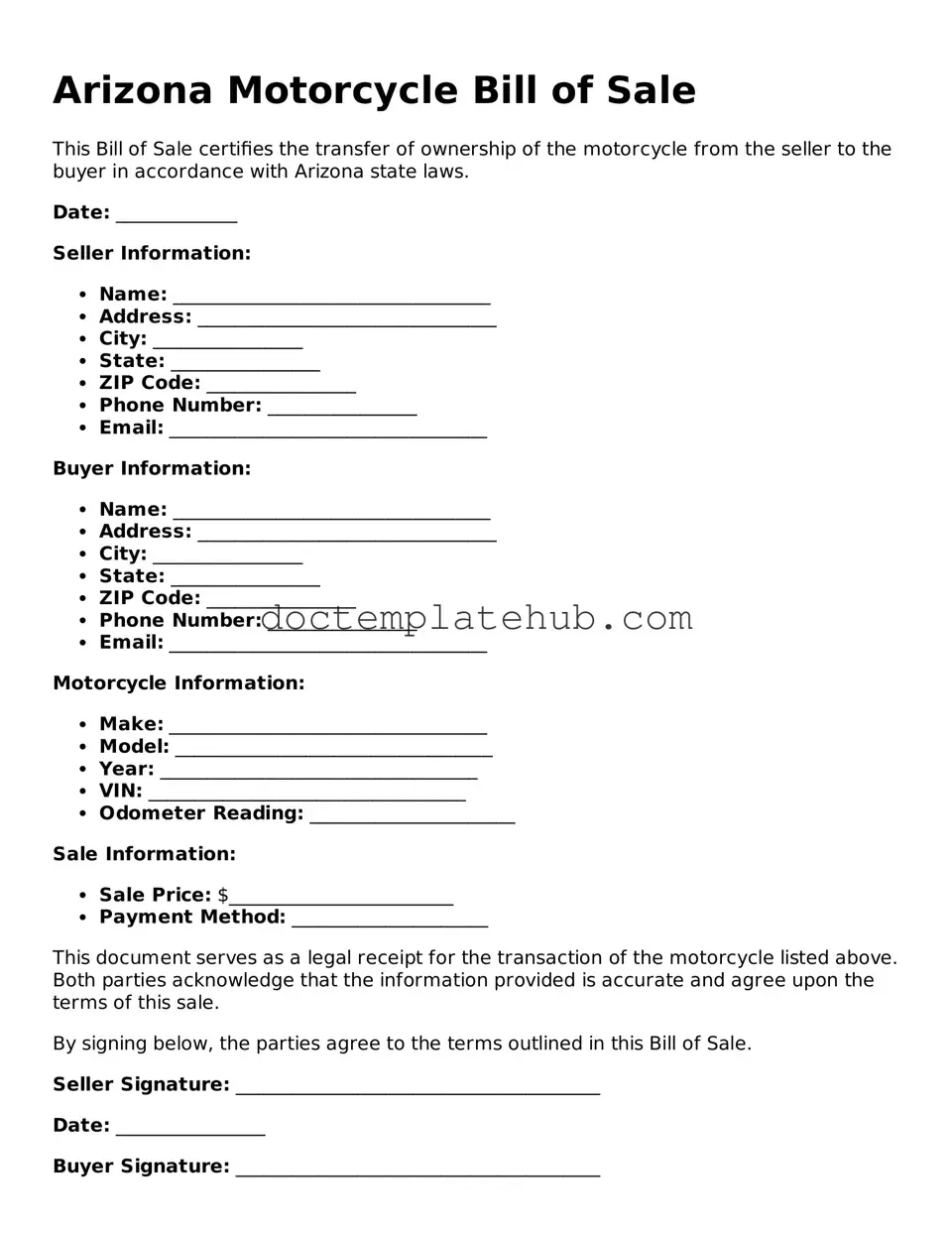The Arizona Motorcycle Bill of Sale form shares similarities with the standard Vehicle Bill of Sale. Both documents serve as proof of the transfer of ownership from one party to another. They typically include essential details such as the buyer's and seller's names, addresses, and signatures, as well as a description of the vehicle, including make, model, year, and Vehicle Identification Number (VIN). This form is crucial for both parties, as it protects the seller from future liabilities and provides the buyer with a record of the transaction, which is often necessary for registration and titling purposes.
Another document that parallels the Motorcycle Bill of Sale is the Boat Bill of Sale. Like the motorcycle version, the Boat Bill of Sale is used to document the sale of a watercraft, ensuring a legal transfer of ownership. It also contains similar information, such as the names and addresses of the buyer and seller, a detailed description of the boat, and the signatures of both parties. This document is particularly important in states where registration is required, as it acts as proof of ownership and can be used to establish the buyer’s rights to the boat.
The Arizona Motorcycle Bill of Sale can also be compared to the ATV Bill of Sale. All-terrain vehicles, much like motorcycles, require a formal bill of sale to document their sale. This document serves the same purpose: it outlines the transaction details and protects both the buyer and seller. The ATV Bill of Sale includes identifying information about the vehicle, such as its make, model, year, and VIN, along with the necessary signatures. This ensures that the ownership transfer is recognized legally, facilitating future registration and use.
Lastly, the Arizona Motorcycle Bill of Sale is akin to the General Bill of Sale. While the General Bill of Sale can apply to a wide range of personal property, its core function remains consistent with that of the Motorcycle Bill of Sale. Both documents provide a written record of a transaction and include similar components, such as the parties involved, a description of the item sold, and the date of the sale. The General Bill of Sale can be utilized for items beyond vehicles, but its fundamental purpose of documenting ownership transfer is the same, making it a versatile tool in various sales scenarios.
